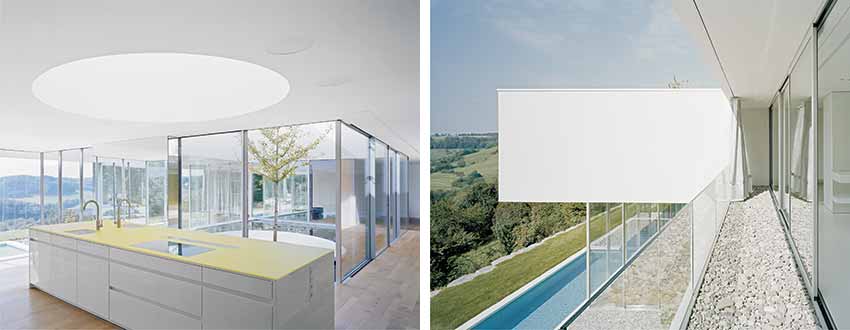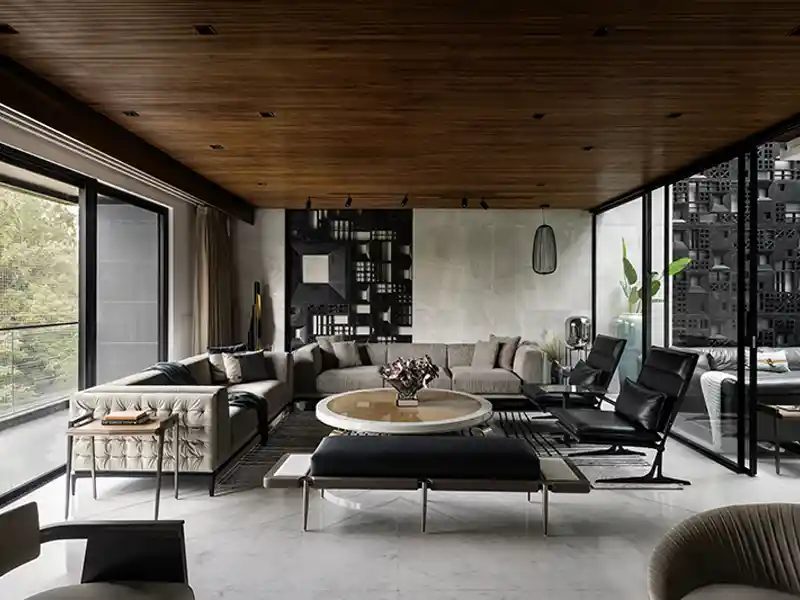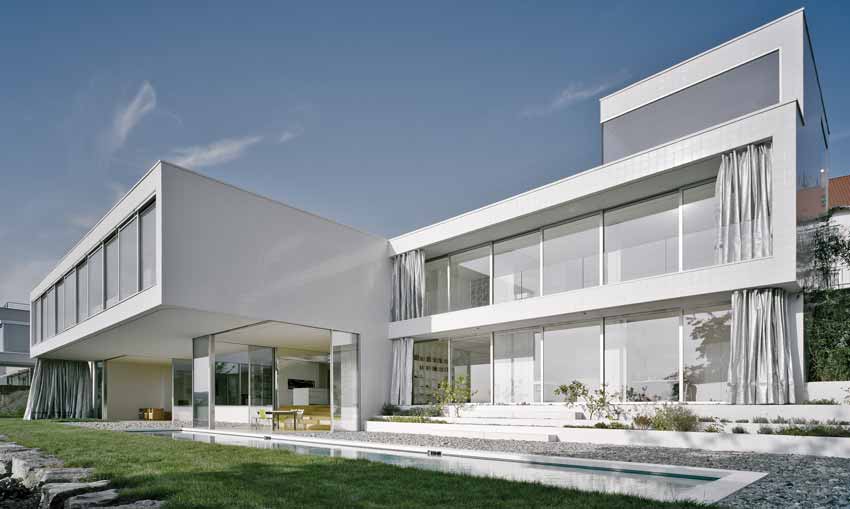
Everyone desires to make their house a home and do best to make their dream project a reality. An industrial designer Georg Spreng, also the founder of group Frogdesign has spent many years of his life living in Canada, and the experiences he made there were very important to him. In Canada Georg Spreng had lived on an estate which was so large one could loose ones way on it. Living in a house, he experienced that different weather – proved how vulnerable humans are and how strong nature can be. From these experiences, he developed an intense connection to nature. This is why – with his own house - it was important for him to build up a connection to the landscape and to let the house step in to the background. He wishes to bring a sense of the expansive open spaces back to his homeland in Wissgoldingen, Germany also. Spreng's idea was to combine work and living in one building; but he also wanted that each have their own separate areas. If at one side he needs the house to be connected with the landscape then at the other side being a design professional, he is interested in materials combination and how people react to them and handle them.
| Project | : Residential House with Jewellery Studio |
| Location | : Wissgoldingen, Southern Germany, near Stuttgart |
| Architects | : C18 Architects, Stuttgart |
| Date of completion | : May 2008 |
| Gross floor area | : 615 m² |
| Gross volume | : 2.049 m³ |
| Photographer | : Miss Brigida Gonzalez (www.brigidagonzalez.de) |
| Client | : Georg Spreng |
With all these in mind, Spreng approach to the German based architectural firm C18 architects and has a detail dialogue with the architects. The dialogue between the two lead to unusual material combination, to combination which doesn't follow established conventions. Materials should be allowed to speak, be allowed to appeal to sense and feelings. The location Spreng selected is the Swabian Alb, a low mountain range in Baden-Württemberg, Germany, fascinated by breathtaking landscapes, vast views, jagged cliffs and large caves belonging to widely branches out underground system.

After visiting the site of construction, C18 Architects developed a layout which accomplishes well all desired features. Designed by Marcus Kaestle, Andreas Ocker and Michel Roeder of C18 Architects the two level structures contain a house and a Jewellery studio.
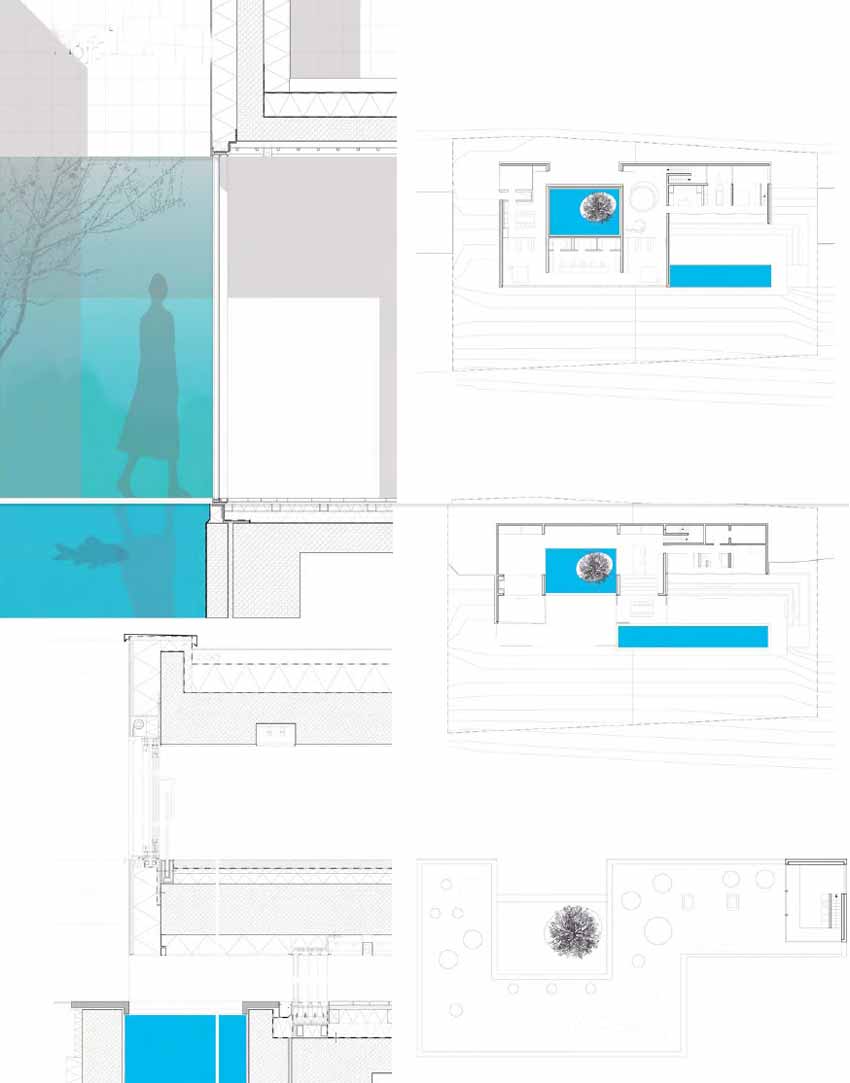
Structural Design
Towards the street the building is closed; it attracts attention with its cladding of white square tiles. The buildings cubic shape also distinguishes it from its neighbors. Even if the house is closed towards the street, it doesn't close itself to the neighbors. A tower room with a window facing the street positions the building in the neighborhood. No fence hinders visitors from entering the premises and looking over a wall onto a pond in an open atrium and into the living area. At this point two entrances lay symmetrically to each side. They both have red emergency shutdown buttons as bell buttons. From this standing point one can already notice a considerable lot about this house; the way it entangles inside and outside and that it is a special house.Two levels lay over one another like two U-shaped brackets. The upper bracket is open towards the street; the lower bracket is open towards the countryside. Through the resulting eyelet one can look down from the entrance area onto a pond in which lays a small island upon which a tree was planted. The tip of this tree can be seen from the upper level from the street. The lower bracket has shorter sides than the upper one so that the upper level projects over the lower level and roofs parts of the outdoor area. The necessary construction for the up to six meters long projections was statically an enormous challenge. To the left of these two brackets a row of rooms and bathrooms joins on. At the end of this the staircase is located over which the crow's nest - already seen from outside - is reached.
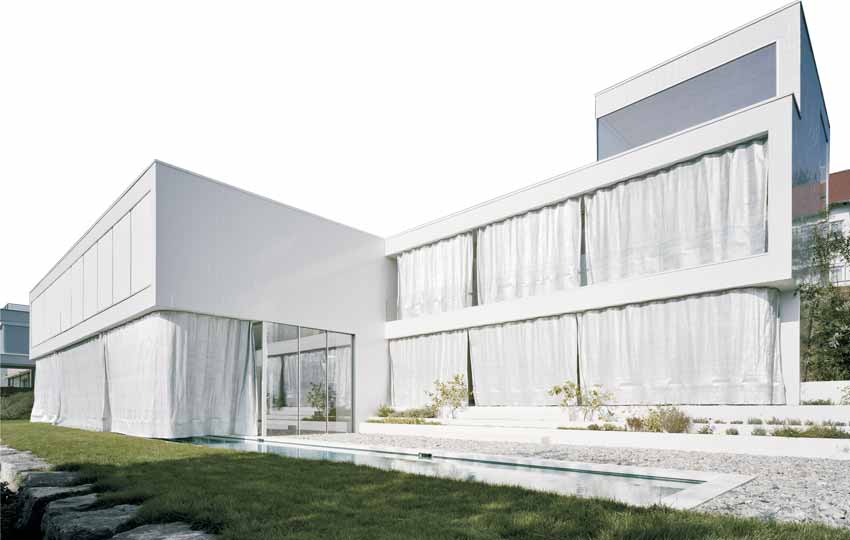
All rooms on both levels are open to the southwest, to countryside with hardly any housing. One doesn't only see fields and meadows but also the weather coming along. Open rooms, a room-high glazing with thin profiles, spaces formed by changing floor levels over the whole width of the living area, spaces which lead into the landscape and also continue the landscape in the interior.
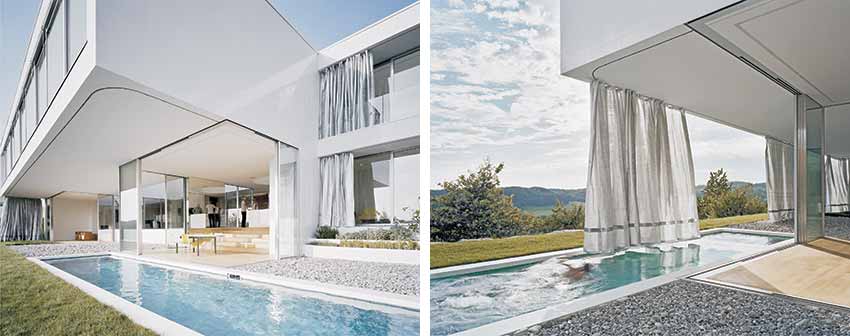
Upon entering the house ones first impression is surprising. Large round skylights lighten the area from above and through an even larger round opening in the floor light reaches a lower level. The light flooding through the openings connects both levels with each other. A yellow bench nestles up to the balustrade. One thing is clear: the cliché of the architects or designer house isn't going to be reproduced here. In the entrance area the floor, walls and built-in wardrobes are all white. One opens the wardrobe doors – they have no handles and open upon pressure – to find the inside is painted in a variety of colors. To the left the lower level is reached over a staircase which is blue-painted and the bedrooms lay alongside. Straight on one reaches the studio which can also be reached directly from the outside by the second entrance.
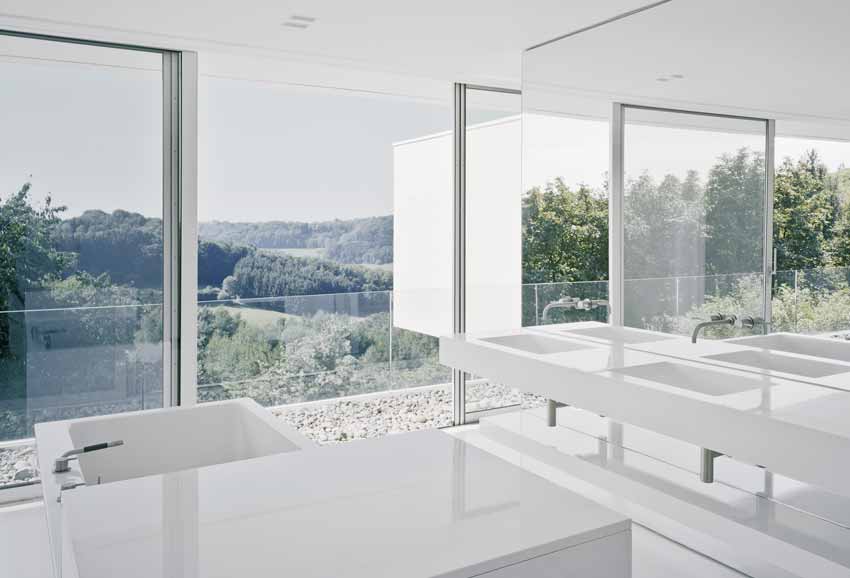
Experiment with Materials
The clients' desire for the best material composition led nowhere not even towards the street - plastered paths or flat terraces; instead there is crude gravel like normally found on the bed of a mountain river. The curtains are made of a silvery shiny material which was developed to cover scaffolding on construction sites. In the living area, the back wall against the ground was constructed by stamping layer over layer of clay. Some of the layers are pigmented lightly so that a picture emerges which resembles a view over the Alb with foggy valleys. Architects have taken full advantages of their client's openness and also use it playfully and tactfully.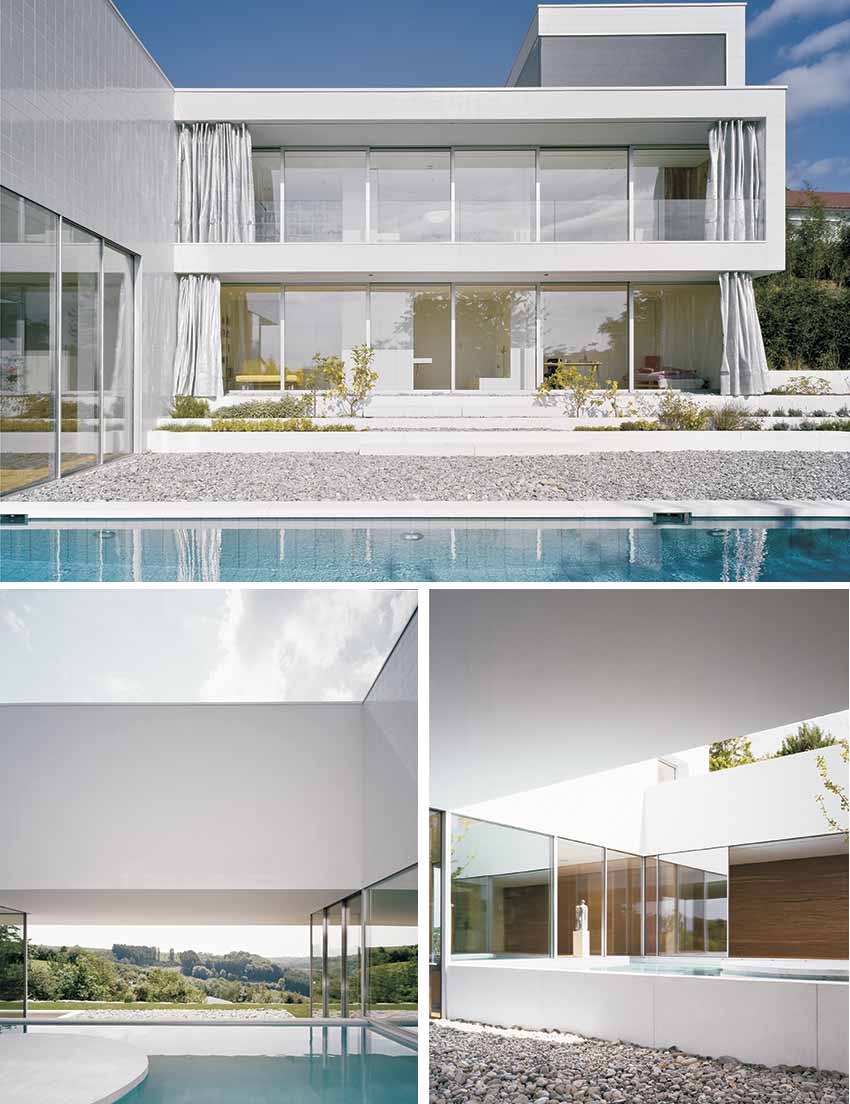
The house is an experimenting field. Conventions of living as well as architectural conventions "how things have always been done" were abandoned. But a game wouldn't be a game if it weren't taken seriously. None of the tiles on the facades were cut. The large mirrors which cover the walls on the garden level between living area and atrium are each out of one piece. The wooden floor made out of Canadian birch is high-quality processed. The wall plaster has a high percentage of clay which works - like the stamped clay wall - humidity regulating. The room-high glazing with its extremely thin profiles is the first of its kind with these dimensions. The balustrade around the skylight in the entrance area is rounded in such a way that it feels good to touch but nothing is laid on top. Everything has a reason; is considered and intended, even if one wouldn't have thought of the solution by oneself.
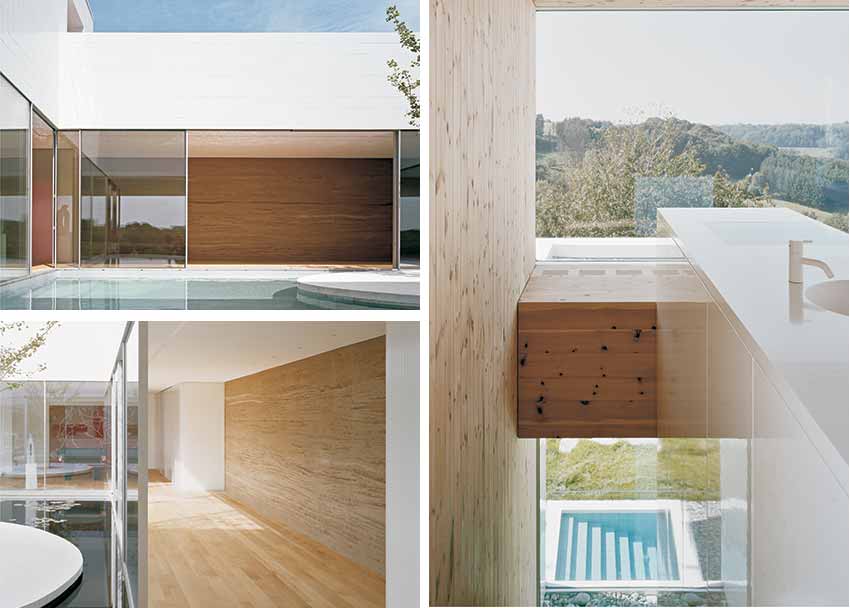
C18 Architects have designed an exceptional house. A house which gives you lust, makes you lust for living and lust for the countryside. And as unconventional as it may be in the neighborhood - it fits in. It is a known fact that it's not easy to pull the wool over the eyes of people from the Alb. Life was too hard to risk relying on somebody else without question.
